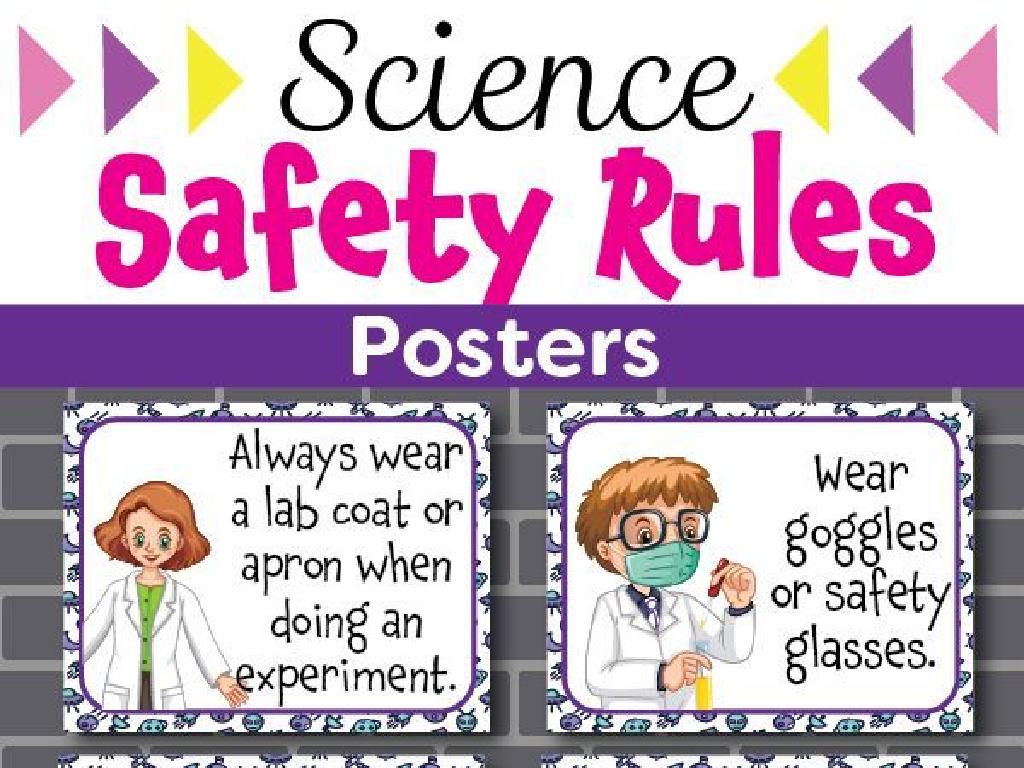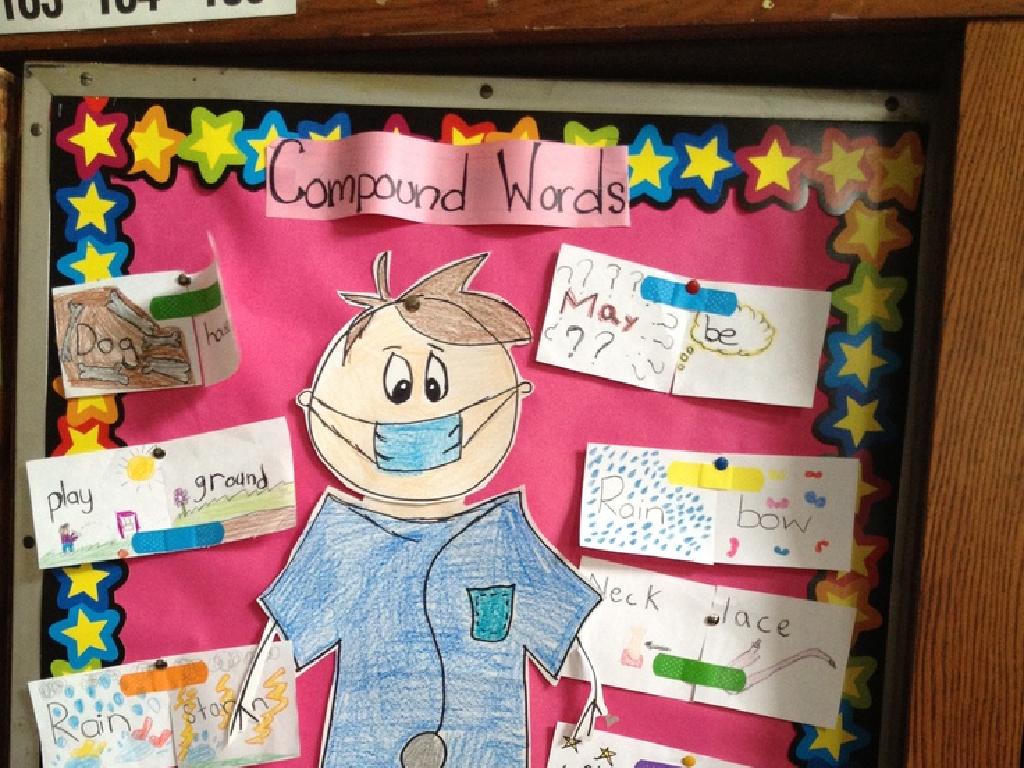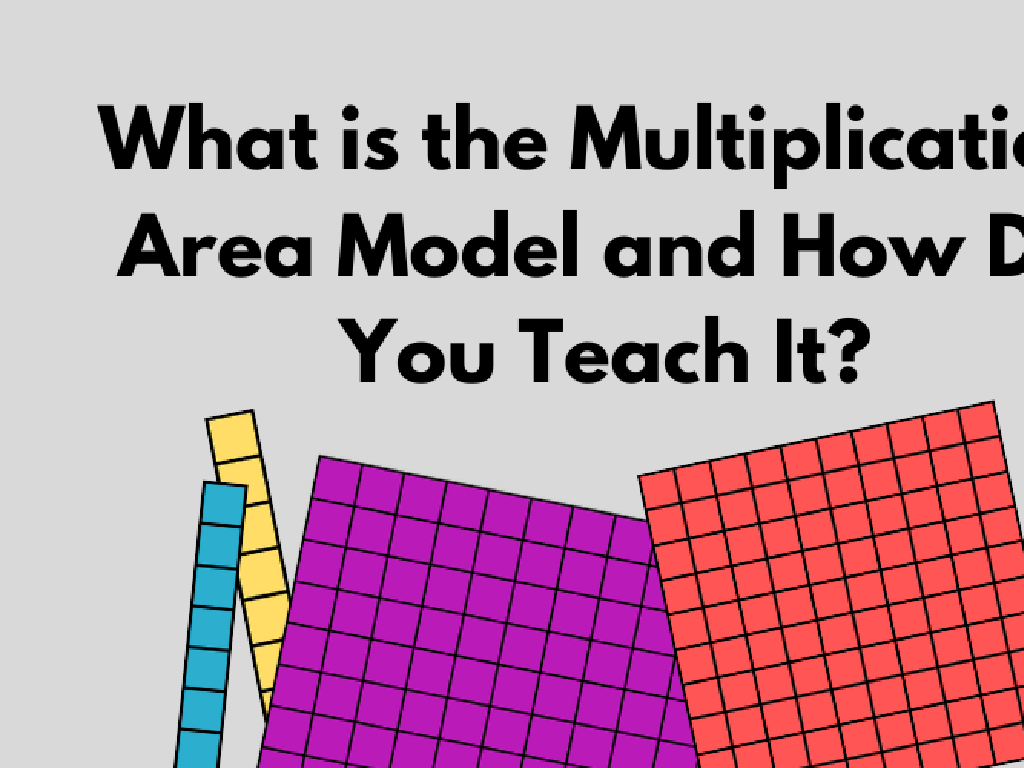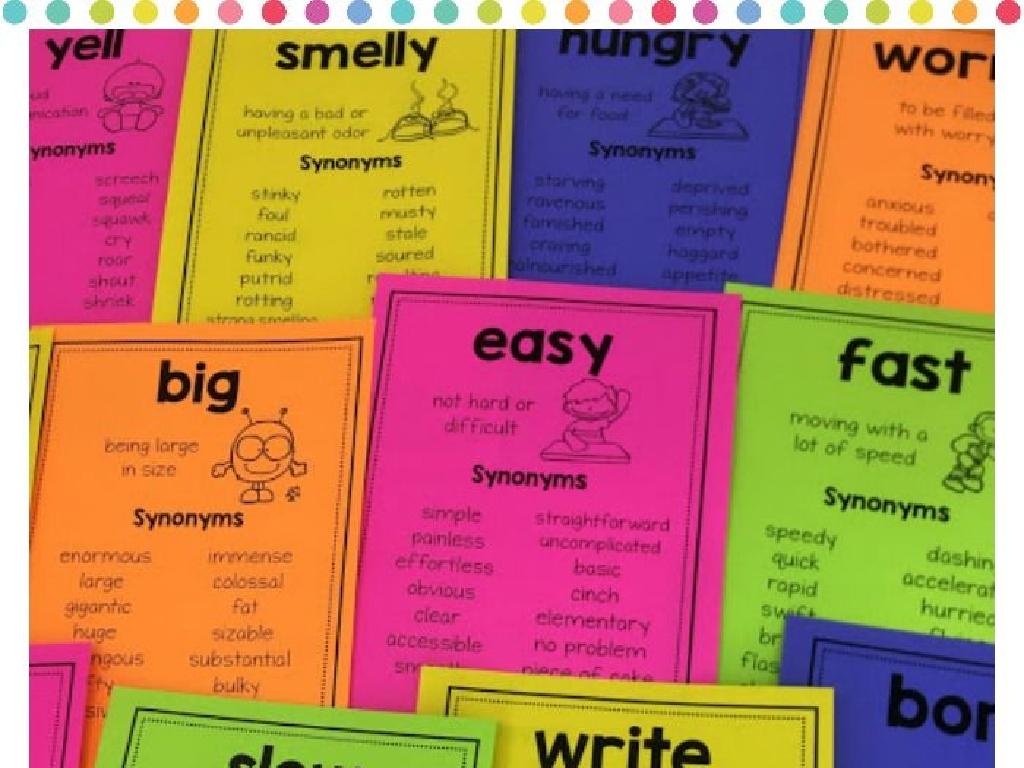Area And Perimeter Of Semicircles And Quarter Circles
Subject: Math
Grade: Eighth grade
Topic: Perimeter And Area
Please LOG IN to download the presentation. Access is available to registered users only.
View More Content
Exploring Perimeter and Area
– Recap perimeter and area concepts
– Perimeter is the boundary length; area is the space inside.
– Significance of these measurements
– Essential for construction, crafting, and more.
– Real-world applications
– Used in fields like architecture, farming, and interior design.
– Engaging with practical examples
|
Begin with a brief review of what perimeter and area are, emphasizing that perimeter is the total distance around a shape while area measures the space contained within it. Highlight the importance of these concepts in various real-world scenarios, such as determining the amount of paint needed for a wall (area) or the length of fence to enclose a yard (perimeter). Provide relatable examples to illustrate their practical applications, such as designing a garden or planning a sports field. Encourage students to think of additional ways perimeter and area measurements are used in everyday life to solidify their understanding.
Circles 101: Understanding the Basics
– Define radius, diameter, circumference
– Radius: circle’s half-width, Diameter: across the circle, Circumference: edge around the circle
– Diameter is twice the radius
– If radius is r, diameter is 2r. They are directly proportional.
– Introduction to Pi (À)
– Pi (À) is a constant approximately equal to 3.14159, crucial for circle measurements
– Pi (À) in circle calculations
– Pi (À) is used to calculate the circumference (C = Àd) and area (A = Àr²) of circles
|
This slide introduces students to fundamental concepts related to circles, which are essential for understanding the area and perimeter of semicircles and quarter circles. Start by defining the radius as the distance from the center to the edge of the circle, the diameter as the distance across the circle through the center, and the circumference as the distance around the circle. Emphasize that the diameter is always twice the length of the radius. Introduce Pi (À) as a mathematical constant that plays a key role in calculating the circumference and area of circles. Ensure students understand that Pi (À) is used in formulas for both the circumference (C = Àd or C = 2Àr) and the area (A = Àr²) of a circle. Provide examples and encourage students to memorize these fundamental relationships and the value of Pi (À) for future lessons on semicircles and quarter circles.
Perimeter (Circumference) of a Circle
– Circumference formula: C = 2Àr
– Where r is the radius of the circle
– Alternative formula: C = Àd
– Where d is the diameter of the circle, d = 2r
– Calculating circumference examples
– Example: If r = 3 cm, C = 2 * À * 3 cm = 6À cm
– Practice: Find circumference with radius
– If a circle has a radius of 4 inches, what is the circumference?
|
This slide introduces the concept of the perimeter, or circumference, of a circle, which is essential for understanding the perimeter of semicircles and quarter circles. Start by explaining the two formulas for calculating the circumference, highlighting the relationship between radius and diameter. Provide examples to illustrate the calculation process. For the practice problem, guide students to apply the formula using a given radius, reinforcing their understanding of the concept. Encourage students to solve the problem and verify their answers with a partner to foster collaborative learning.
Calculating the Area of a Circle
– Area of a circle formula
– A = Àr^2, where A is area, À is pi (~3.14), and r is radius.
– Examples: Area calculation
– If radius is 3 cm, area is À * 3^2 = À * 9 = 28.26 cm^2.
– Practice problem
– Find the area if radius is 5 inches.
– Understanding À and r^2
– À is a constant, r^2 means radius squared.
|
Introduce the formula for the area of a circle, A = Àr^2, and explain each component. À (pi) is approximately 3.14, and r represents the radius of the circle. Provide examples with different radii to show how to apply the formula. For the practice problem, guide students to substitute the given radius into the formula and calculate the area. Emphasize the importance of squaring the radius and multiplying by À to find the area. Encourage students to memorize the formula and understand its components for future problems involving circles.
Area & Perimeter: Semicircles and Quarter Circles
– Define semicircles and quarter circles
– A semicircle is half a circle, and a quarter circle is half of that.
– Formulas for perimeter and area
– Perimeter: Add the straight edge length to the arc. Area: Use Àr^2/2 for semicircles, Àr^2/4 for quarter circles.
– Straight edge in perimeter
– The diameter or radius forms the straight edge of these shapes.
– Practical examples
– Calculate the perimeter and area of a semicircular garden or a quarter circular window.
|
This slide introduces students to the concepts of semicircles and quarter circles, which are fractions of a full circle. Begin by defining these shapes and then move on to the mathematical formulas needed to calculate their perimeter and area. Emphasize the importance of including the straight edge (the diameter for semicircles and the radius for quarter circles) when calculating the perimeter. Provide real-life examples such as a semicircular garden or a quarter circular window to help students visualize these concepts. Encourage students to practice these calculations with different radii to strengthen their understanding.
Perimeter of Semicircles and Quarter Circles
– Perimeter of a semicircle: P = Àr + 2r
– P represents the perimeter, r is the radius
– Perimeter of a quarter circle: P = (Àr/2) + 2r
– P is the perimeter, r stands for radius
– Practice problem: Semicircle
Find the perimeter of a semicircle with radius 4 cm
– Practice problem: Quarter circle
Calculate the perimeter of a quarter circle with radius 3 cm
|
This slide introduces students to the formulas for calculating the perimeter of semicircles and quarter circles. Emphasize the importance of understanding the terms in the formulas, where ‘P’ stands for the perimeter and ‘r’ for the radius of the circle. Provide practice problems for each shape to reinforce the concept. For the semicircle, use a radius that is an even number for simpler calculation, and for the quarter circle, use a smaller odd number to demonstrate a different example. Encourage students to solve these problems and verify their answers with a partner. This exercise will help solidify their understanding of how to apply the formulas to real-world problems.
Area of Semicircles and Quarter Circles
– Semicircle area formula: A = (Àr^2)/2
– For a semicircle with radius r, halve the area of a full circle
– Quarter circle area formula: A = (Àr^2)/4
– Quarter circle area is half of a semicircle or one-fourth of a full circle
– Practice problem: Find semicircle area
– If a semicircle has a radius of 4 units, what is its area?
– Practice problem: Find quarter circle area
– Calculate the area of a quarter circle with a radius of 3 units
|
This slide introduces students to the formulas for calculating the area of semicircles and quarter circles, which are fractions of the area of a full circle. The key concept is understanding how to modify the full circle area formula by incorporating the relevant fraction (1/2 for semicircles, 1/4 for quarter circles). Provide practice problems to apply these formulas, ensuring students are comfortable with the concept of À (pi) and squaring the radius. Encourage students to visualize the shapes and how they relate to a full circle. During class, work through the practice problems together, and then assign additional problems for independent practice.
Class Activity: Measuring Classroom Objects
– Measure objects’ perimeter & area
– Use rulers to measure circular objects, like clocks or plates
– Work in groups for collaboration
– Each group will measure different objects and compare results
– Discuss findings with the class
– Share how you calculated and what challenges you faced
– Relate calculations to real-life
– How can these calculations be useful in real-life scenarios?
|
This activity is designed to provide hands-on experience with measuring and calculating the perimeter and area of semicircles and quarter circles. Students will work in small groups to measure various circular objects found in the classroom. Provide rulers and flexible measuring tapes for accuracy. After measurements, guide them to apply the formulas for perimeter and area of circles, adjusting for semicircles and quarter circles. Encourage each group to discuss their methods and findings, fostering a collaborative learning environment. Conclude with a class discussion on the practical applications of these calculations, such as in construction, art, and design. This will help students appreciate the relevance of math in everyday life.
Homework: Mastering Semicircles and Quarter Circles
– Complete assigned practice problems
– Measure real-life circular items
– Find items like bowls or clocks and use a ruler or a tape measure
– Review today’s lesson for mastery
– Anticipate the next topic
– We’ll be moving on to complex shapes!
|
For homework, students should complete the practice problems provided to solidify their understanding of the area and perimeter of semicircles and quarter circles. Encourage them to find household items that are semicircular or quarter circular and measure them as a practical application of today’s lesson. This will help them visualize the concepts in a real-world context. Remind students to review the formulas and concepts learned today to ensure they are prepared for the next class, where we will be expanding our knowledge to more complex shapes. Provide a variety of practice problems with different difficulty levels to cater to all students and ensure they feel challenged.






